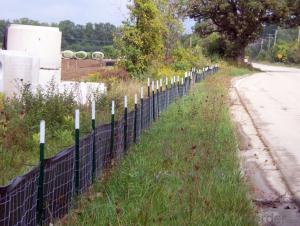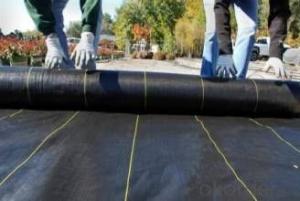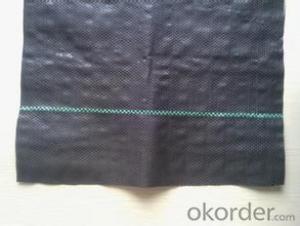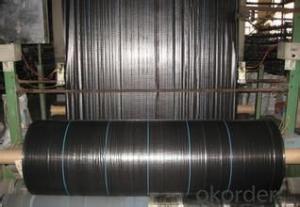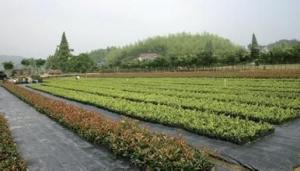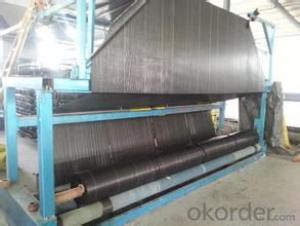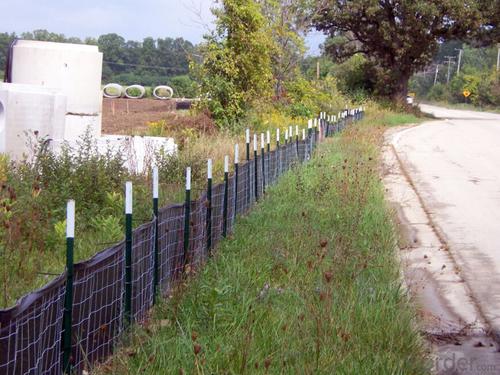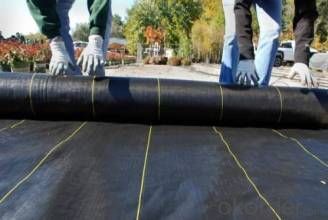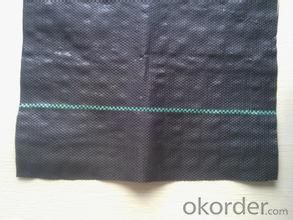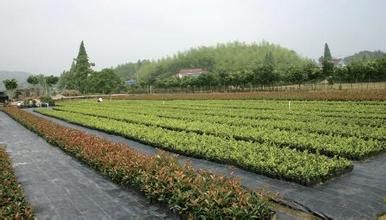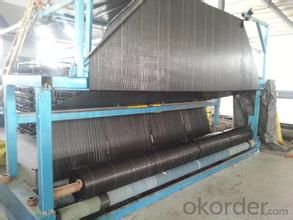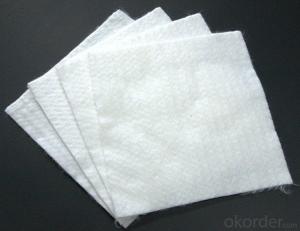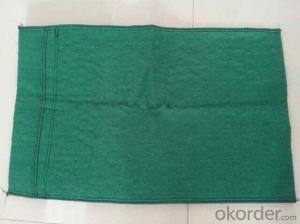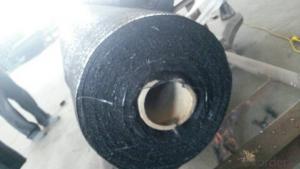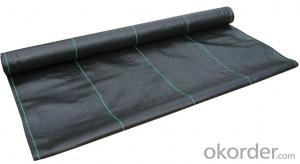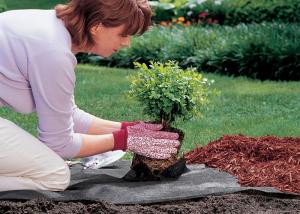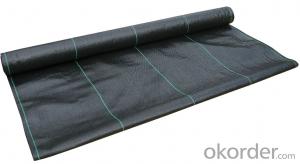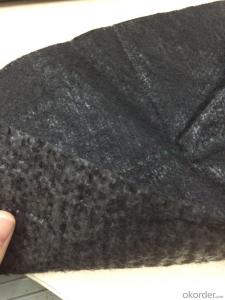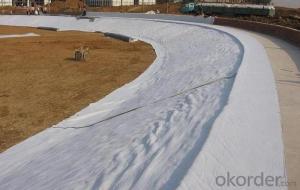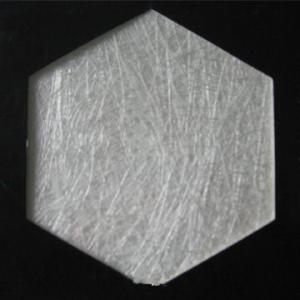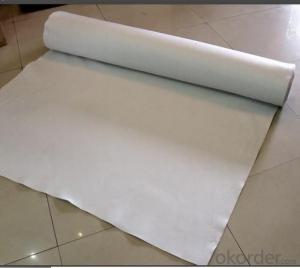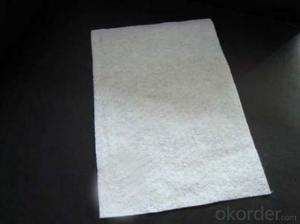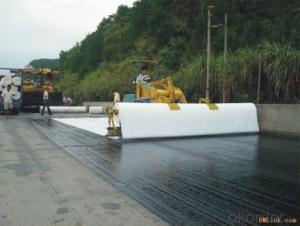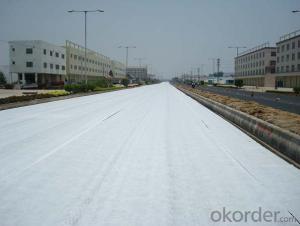Western Landscape Silt Fence with Wooden Stake/Polypropylene Woven Fabric
- Loading Port:
- Qingdao
- Payment Terms:
- TT OR LC
- Min Order Qty:
- 1000 roll
- Supply Capability:
- 100000 roll/month
OKorder Service Pledge
OKorder Financial Service
You Might Also Like
1.Production Description:
A silt fence, also referred to as a filter fence, is a structure composed primarily of geotechnical fabric and that is used as a form of sediment control.These temporary barriers are relatively low in cost, especially when compared to the damages they can prevent. They keep loose soils from traveling into local bodies of water and they also minimize the impact that various forms of development can have on surrounding wildlife.
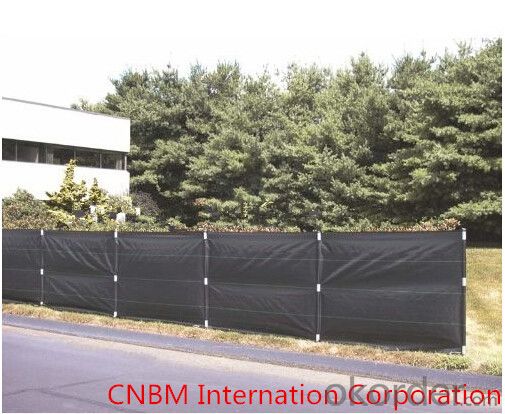
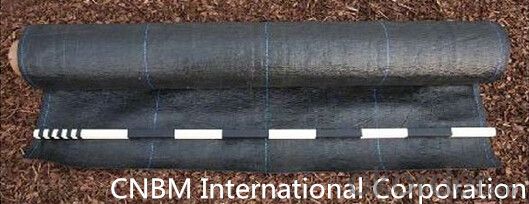
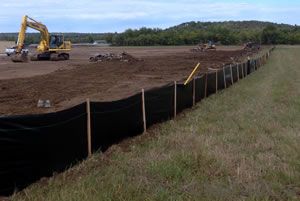
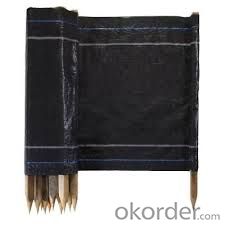
2.Production Functions and Features:
1)Excellent weed control
2)Excellent UV resistance
3)Moisture,fertilizers,air reach plants to allow for healthy soil
4)Good water and air permeability
5)Exceptional toughness and strength
6)Durable,tear-resistant,anti-rot and anti-mildew
7)Light weight,easy to install,follows natural ground contours
8)Ideal for use in landscaped beds,under decks and walkways
9)Fashionable design,high quality,competitive price
10)Long service life
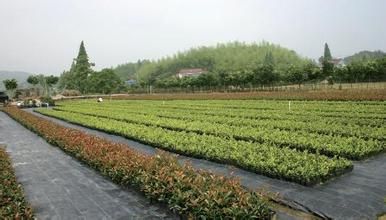
3. Production Usage:
1.Prevent leakage disposal in landfill or waste water or waste dregs disposing field.
2.River bank ,lake dam ,mine remainings ,resevoir ,tunnel ,liquid storage pool(pit ,mine)
3.Preventing leakage in subway ,basement ,tunnel ,hole .
4.Anti-salt leakage in roadbed and other ground sill.
5.The plane direction laying of dam ,the vertical direction laying for ground sill.used in the construction fence and waste material field.
6.Used in ground sill of road ,highway ,railway and waterproof layer of welling clay and wet collapsed loess.
7.Preventing leakage on rooftop.
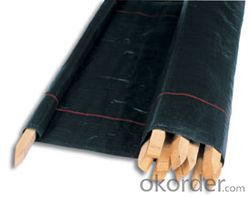
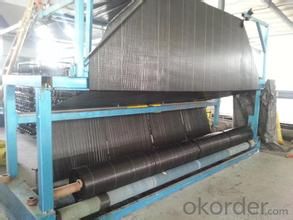
4. FAQ:
Q1: What is your minimum order quantity?
A:The minimum order quantity is 5000 ,but it is negotiable.
Q2:What is your payment terms?
A: T/T,Western Union,Paypal,L/C...
Q3:What is your delivery time?
A:Production time usually costs 2-20 days.
Waiting to cooperate with you!
- Q: What are the different geotextile testing methods?
- There are several geotextile testing methods that are commonly used to evaluate the performance and quality of geotextile materials. Some of these methods include tensile strength testing, puncture resistance testing, tear resistance testing, bursting strength testing, and water permeability testing. These tests help determine the suitability and durability of geotextiles for various applications such as soil stabilization, filtration, and erosion control.
- Q: Concrete panel shop asphalt do not add geotextiles
- Plus no geotextile cloth according to the design requirements and construction specifications. Generally require high road construction need to lay geotextile. Geotextile manufacturers to answer your questions
- Q: Can geotextiles be used in the protection of retaining walls?
- Yes, geotextiles can be used in the protection of retaining walls. Geotextiles are commonly used as a barrier against soil erosion and to reinforce the soil behind retaining walls. They help to prevent the loss of backfill material and provide stability and strength to the structure.
- Q: Are geotextiles poisonous?
- Geotextile is not toxic, the production of geotextile raw materials are polyester (PET) or polypropylene (PP). Polyester and polypropylene have become daily necessities. Many of the mineral water bottles are also produced by PET and PP raw materials.
- Q: Can geotextiles be used in mining and landfill closure applications?
- Yes, geotextiles can be used in mining and landfill closure applications. Geotextiles are commonly used in these applications to provide erosion control, soil stabilization, and filtration. They act as a barrier to prevent soil erosion and help in containing mine waste or landfill materials. Additionally, geotextiles can improve the overall efficiency and safety of these operations by reducing the risk of environmental contamination.
- Q: River slope protection geotextile unit area quality is generally how much
- Geotextile width of 2-6 meters. Length can be customized according to the requirements, generally 100g - 1000g specifications, per square meter. I am specializing in the production of geotextile materials, welcome you, hope to adopt!
- Q: Geotextile is what kind of material in the construction? Is it a hydroelectric material?
- Geotextile is what kind of material in the construction? Is it a hydroelectric material?
- Q: Can the roof waterproof with geotextiles?
- According to personal circumstances, but suggested to find professional personnel assessment. First of all, professional construction, roof waterproofing is a very test of professional skills work, need to hold the local construction administrative departments issued the job certificate. Professional construction units will be detailed survey and roofing drawings. Survey the actual situation of statistics, regional climate, housing and other factors, with the data obtained to develop professional construction program. Construction will be the future may cause housing flaws in the defect to be repaired, so to prevent the future. Secondly, qualified materials, roof leakage in China, about 20% of the material is unqualified, resulting in leakage of the roof of the situation. So in the choice of roof or roof of the material must meet the relevant national standards, and generally qualified roofing materials will have qualified documents and quality inspection departments of qualified certification. In the choice of decoration materials can request the relevant proof, at the same time to check the decoration materials production date, brand, batch number, specifications and so on information to ensure that the quality of qualified roofing materials. Finally, the acceptance of the project, because the roof or roof environment is very complex, so its decoration construction requirements must be strict. The process needs to have a waterproof, leak-proof, anti-seepage function, the summer high temperature can be high temperature, anti-ultraviolet, cold winter to have anti-freeze-resistant low temperature, daily sunshine to have anti-aging and so on.
- Q: Can geotextiles be used in geogrid reinforced retaining walls?
- Yes, geotextiles can be used in geogrid reinforced retaining walls. Geotextiles are often used as a separation and filtration layer between the soil and the geogrids in these walls. They help prevent soil erosion, improve drainage, and provide additional support to the geogrids, enhancing the overall stability and performance of the retaining wall.
- Q: Filter geotextile performance ~ main function ~
- Asked to filter the geotextile, you answered wrong
Send your message to us
Western Landscape Silt Fence with Wooden Stake/Polypropylene Woven Fabric
- Loading Port:
- Qingdao
- Payment Terms:
- TT OR LC
- Min Order Qty:
- 1000 roll
- Supply Capability:
- 100000 roll/month
OKorder Service Pledge
OKorder Financial Service
Similar products
Hot products
Hot Searches
Related keywords
